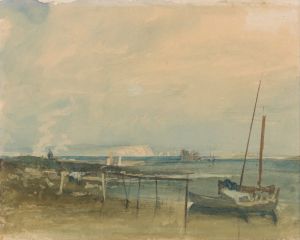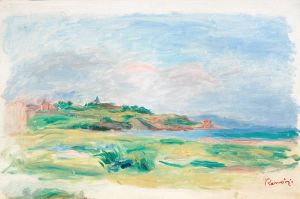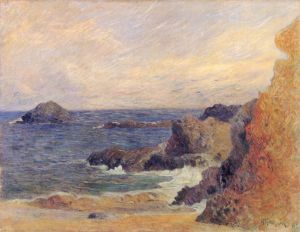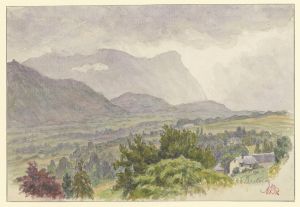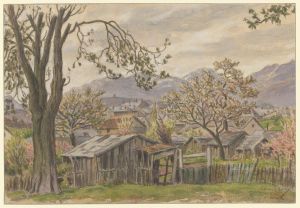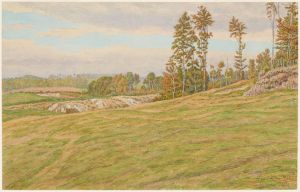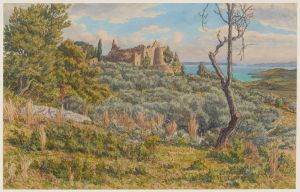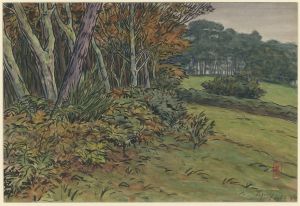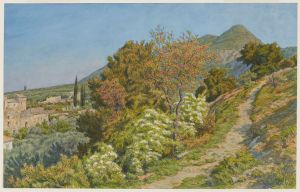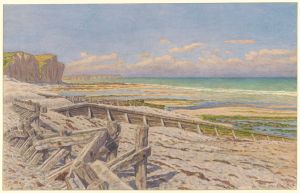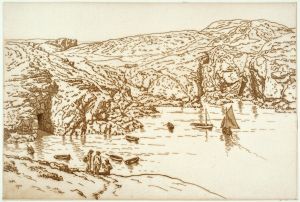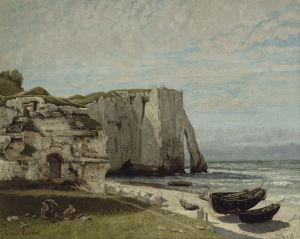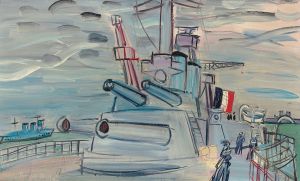
Pointe du Raz, vallon près de la pointe du Raz
A hand-painted replica of Henri Rivière’s masterpiece Pointe du Raz, vallon près de la pointe du Raz, meticulously crafted by professional artists to capture the true essence of the original. Each piece is created with museum-quality canvas and rare mineral pigments, carefully painted by experienced artists with delicate brushstrokes and rich, layered colors to perfectly recreate the texture of the original artwork. Unlike machine-printed reproductions, this hand-painted version brings the painting to life, infused with the artist’s emotions and skill in every stroke. Whether for personal collection or home decoration, it instantly elevates the artistic atmosphere of any space.
Henri Rivière (1864–1951) was a French artist known for his innovative contributions to printmaking and his influence on the revival of traditional techniques, particularly in the context of Japonisme. One of his notable works, Pointe du Raz, vallon près de la pointe du Raz, is a color lithograph that reflects his fascination with the natural landscapes of Brittany, a region in northwestern France.
The artwork depicts a scene near the Pointe du Raz, a dramatic promontory on the westernmost tip of Brittany, known for its rugged cliffs and sweeping views of the Atlantic Ocean. The title translates to "Pointe du Raz, valley near the Pointe du Raz," indicating that the composition focuses on a valley close to this iconic coastal landmark. Rivière's portrayal captures the essence of the Breton landscape, emphasizing its natural beauty and the interplay of light and shadow.
Rivière was deeply inspired by Japanese woodblock prints, particularly the works of Katsushika Hokusai and Utagawa Hiroshige. This influence is evident in Pointe du Raz, vallon près de la pointe du Raz, where he employs a flattened perspective, bold outlines, and a harmonious color palette. These stylistic choices reflect the aesthetics of ukiyo-e prints while adapting them to the distinct character of the French countryside.
The lithograph is part of Rivière's celebrated series Les Aspects de la Nature ("Aspects of Nature"), which he created between 1897 and 1917. This series consists of 40 color lithographs, each depicting a different natural scene, often from Brittany. Rivière's goal with this series was to capture the diverse moods and atmospheres of the natural world, using lithography to achieve a painterly effect. The series was highly regarded for its technical innovation and artistic sensitivity.
Rivière's work, including Pointe du Raz, vallon près de la pointe du Raz, is notable for its ability to evoke a sense of place and atmosphere. His prints often convey a quiet, meditative quality, inviting viewers to appreciate the subtleties of nature. The Pointe du Raz itself has long been a source of inspiration for artists and writers, celebrated for its dramatic scenery and cultural significance in Breton folklore.
Today, Henri Rivière's lithographs are considered important examples of late 19th and early 20th-century printmaking. They are held in the collections of major museums, including the Musée d'Orsay in Paris, which houses several works from Les Aspects de la Nature. Pointe du Raz, vallon près de la pointe du Raz remains a testament to Rivière's skill as a printmaker and his ability to merge traditional techniques with modern artistic sensibilities.





